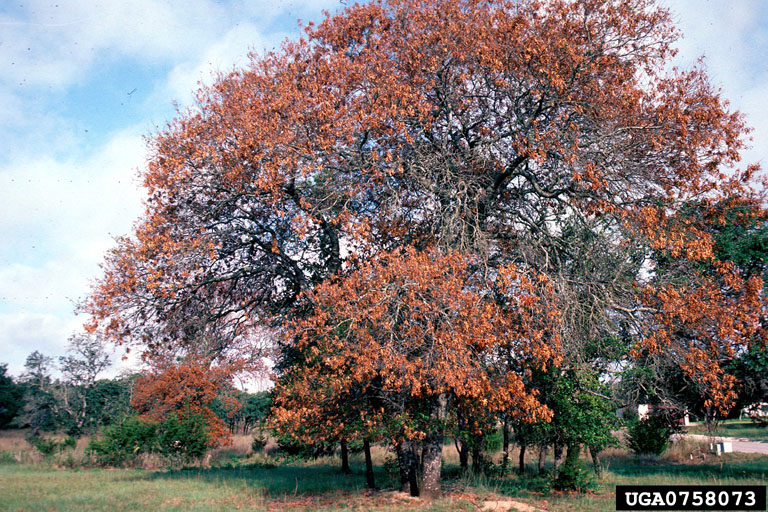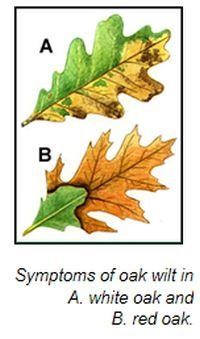When we think of invasive species, we imagine the emerald ash borer, giant hogweed or Asian carp. While these invasive plants and animals receive a lot of attention, fungi and diseases can also be invasive species. Oak wilt is a disease caused by an invasive fungus that attacks the xylem tissue of a tree. This attack inhibits the movement of water and nutrients, eventually killing trees in both the red and white oak families. Though its country of origin is unknown, it was first discovered in Wisconsin in 1944 and has spread as far as Texas, killing tens of thousands of trees. Though there are some cases within Upstate New York, none are in the WNY PRISM region, making it an important species to keep a lookout for.

The early detection of such species is essential to preventing their establishment and spread within a region. In some cases, if a new infestation is found early enough, land managers can even eradicate it. Landowners are integral in this process because they notice seemingly small changes on their properties and can report this valuable information. This was how the infestation of oak wilt was detected in South Bristol. Last summer, a concerned landowner contacted the NYS Department of Environmental Conservation (DEC) after they noticed signs of oak wilt on their property. Once confirmed as oak wilt, the DEC was able to establish a quarantine and begin performing surveys, both ground and aerial, to find any additional diseased trees. This past fall and winter, the DEC worked with private landowners to remove and chip infected trees. Over the next five years, surveys will continue and if no new cases are found, this population will be considered eradicated, a huge victory for invasive species management.
What you can Do:
Learn to identify oak wilt

Oak wilt causes leaves to change from their natural green color to a dull, bronze color along their edges. As the disease progresses, this color will move inward and eventually cover most of the leaf. Infected leaves begin this process in spring and summer and eventually fall off the tree. As the disease progresses, the fungus growing within the tree can cause the bark to split vertically. Though oak wilt affects both the red and white oak tree families, it progresses much more rapidly in red oaks. Once infected, red oak trees can die after 1-4 months, while white oaks may take up to 20 years.
Report
If you think your tree is infected with oak wilt, contact the DEC Forest Health office at foresthealth@dec.ny.gov or by calling 1-866-640-0652. Please report even if you are unsure!
Don’t Move Firewood
Not moving firewood is a great way to avoid spreading a variety of invasive species including the emerald ash borer, Asian longhorned beetle and oak wilt. New York State regulations prohibit the movement of untreated firewood more than 50 miles from its source. When camping, burn it where you buy it!
Prune to Protect
Prune oak trees at the proper time of year to help prevent oak wilt from becoming established in a new area. Oak wilt spores can be carried by insects to uninfected trees and will begin growing in trees with open wounds. Because of this, it is important to prune oak trees when both the insects and fungus are dormant, between November and March. For more tips on pruning trees, see the USDA’s Guide on HOW to Prune Trees. As an added benefit, pruning trees can also help them grow more vigorously in the spring, so make sure to get out and trim your trees before the end of March!

